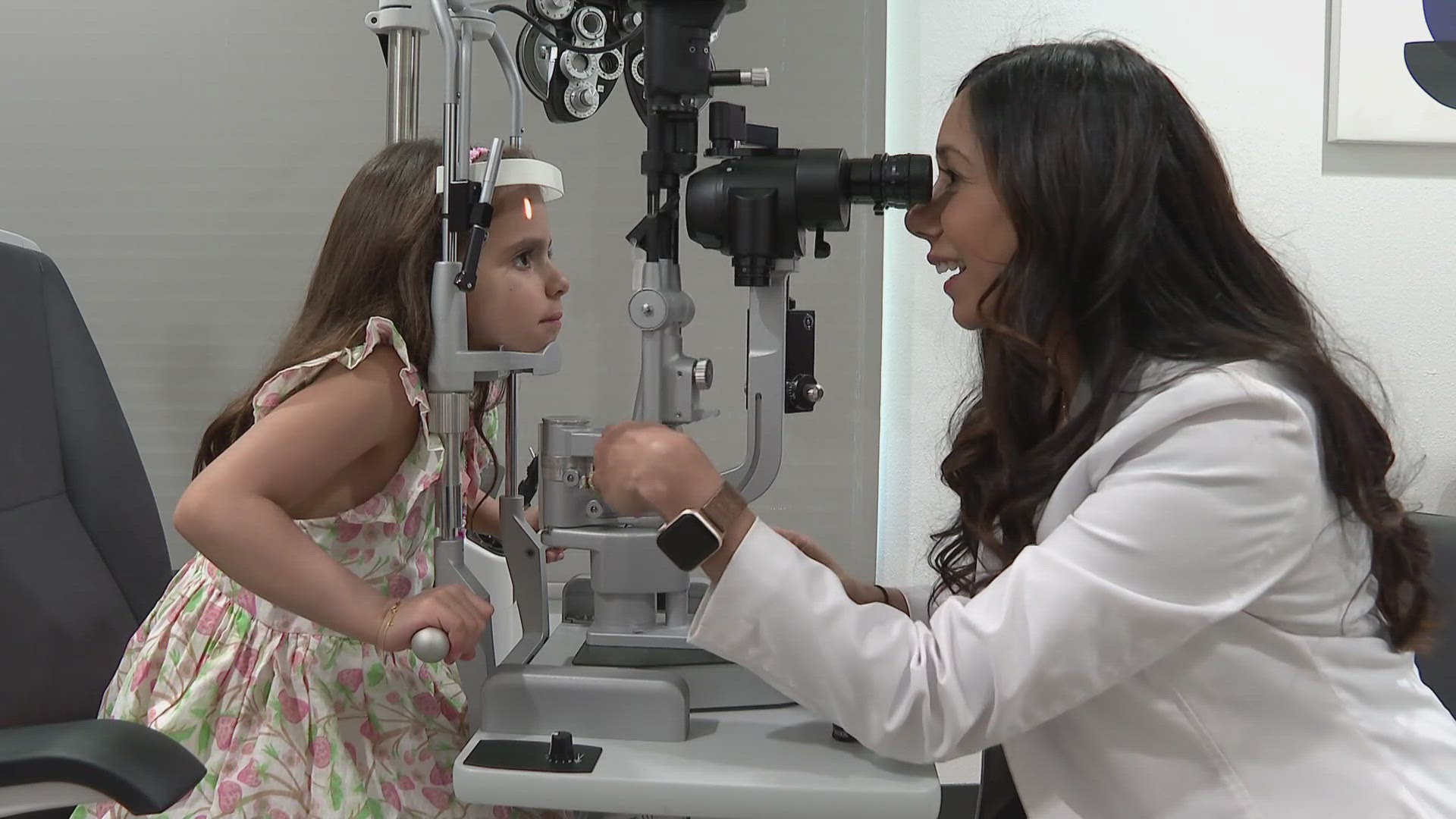COLORADO, USA — It's hard to learn when you can't see the whiteboard. It's one reason why the law requires Colorado schools to screen young students for vision problems.
These tests are becoming more important now than ever before with doctors seeing a rise in the number of kids being diagnosed as nearsighted, also known as myopia, which is when you can see close-up but not far away. The American Academy of Ophthalmology calls it an epidemic. They predict half of the American population will be nearsighted by 2050.
"It is concerning that it's increasing,” said Pediatric Ophthalmologist Dr. Jasleen Singh with Mountain Eye Partners in Lone Tree. "Just the other day I had a 3-year-old that I had to prescribe glasses because he was already significantly nearsighted with astigmatism.”
If a child is diagnosed as nearsighted but doesn’t get proper treatment for it, such as contacts or glasses, Dr. Singh said that can lead to more serious issues in the future including permanent loss of vision.
“The eye is a spherical shape and with high myopia, the eye stretches and becomes more elongated,” said Dr. Singh. “Because of that, the retina, the back of the eye, stretches and that can lead to retinal abnormalities such as retinal tears or detachments.”
What's causing more kids to be diagnosed as nearsighted? According to the American Academy of Ophthalmology, some of it is genetic but there's also another factor that could be playing a major role in the epidemic.
"One theory is increased near activity,” said Dr. Singh. “We're more digital than we used to be. So, a lot of that might be increased iPhone time, increased iPad time, increased near work, and less outdoor play could be a component as to why myopia is increasing."
Dr. Singh said parents can help at home by encouraging their kids to practice the 20-20-20 rule. Every 20 minutes look at something 20 feet away for 20 seconds.
"When kids are already nearsighted at a young age, it's just going to keep increasing as they grow,” said Dr. Singh. “So, we want to stabilize that during the growth phase because once you reach adulthood, it's harder to change.”
As kids grow, their vision changes. Dr. Singh said a child could pass a vision exam at the beginning of the year but fail it a few months later. If a child squints to see things far away or holds objects close to their face, she said that’s a telltale sign it's time to visit the eye doctor.

